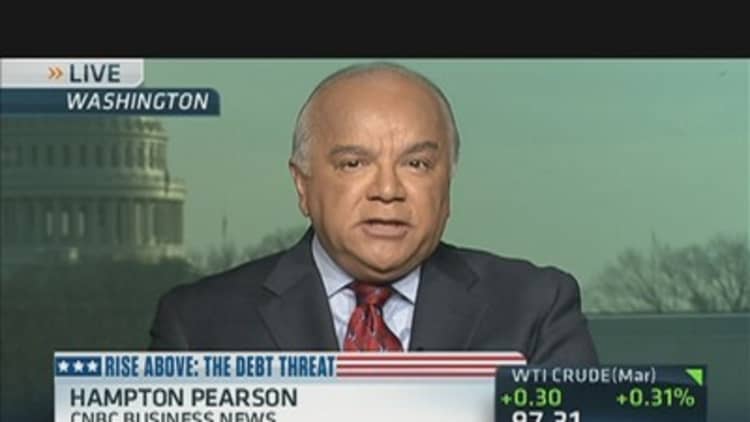Despite fundamentals that should be contributing to a strong rally, gold is clearly losing steam.
A slow decline that began late last year has snowballed into a full-fledged sell off. On Friday, the yellow metal that has become the darling of the market's inflation hawks tumbled to a six-month low, briefly trading below $1,600. Since the start of 2013, gold has shed four percent – a sharp reversal from a year ago, when it surged by 10 percent over the same period.
Bullion's downturn has left gold bugs scrambling for cover,and grappling for reasons why the metal is falling. Widespread central bank easing has led to a loss of confidence in paper currencies, with the dollar falling to a 15 year low as a reserve currency. (Read More: Is the Dollar Dying? Why US Currency Is in Danger.)
Meanwhile, the U.S. has yet to find a way to extricate the federal budget from a sea of debt and red ink, and the global economy – while recovering– is still not growing at full potential. Central banks are maintaining their foot on the accelerator pedal of more cheap money, leading to fears of a "currency war". (Read More: What Currency War? Move Along, G-20 Leaders Say.)

In other words, the main drivers supportive of a higher gold price remain firmly in place. So what's behind the sell-off?
"Right now the market is lacking an immediate trigger toincrease exposure to gold. You don't have people buying as much but you have peopleselling," said Michael Widmer, a metals strategist at Bank of America-MerrillLynch in London.
He explained that gold investors, sensing the eventual withdrawal of monetary stimulus as economies recover, are starting to scale back on an asset that hit a record high above $1900 in 2011. As a result, blind ebullience and the status quo simply aren't enough impetus to continue to build long positions.
"The market is waiting for something to tell them that they should buy gold, and they don't have that," Widmer added. (Read More: Bulls Fret Gold Rally May Be Done.)
A bearish case for the yellow metal appears to be building. The World Gold Council said in a report that while global central banks built up stocks of gold last year to their highest levels since 1964, global demand for bullion actually fell by four percent. Lack of buying from emerging market powerhouses India and China were cited as the primary reasons behind the move.

In a widely circulated report that helped touch off Friday's gold rout, Citigroup said that bullion was "a very 'long cycle' metal, and if it is in the process of peaking now, then history suggests that it could go into hibernation for a long, long time."
Edmund Moy, chief strategist for Morgan Gold and a long-term bull on gold, classified the metal's drop as "short-term volatility," that was unlikely to continue, given the fiscal picture in the U.S. and Europe's prolonged debt-crisis and economic slump.
"It's less the price of gold and really the fundamentals" that matter, said Moy, a former director of the U.S. Mint. I just don't think that the the president and Congress are going to get to a debt agreement easily. Our deficit is still going to climb to $2 trillion a year."
Indeed, hopes are fading for a solution to the fight in Washington over taxes and spending. The White House and Congress are jockeying for political advantage, in the event that a March 1 deadline passes for automatic spending cuts and tax hikes.
Should Washington succeed in reforming the budget, "then I'm going to start selling gold," Moy added.
--Giovanny Moreano contributed to this article.

